Image Credit: All photos: Craig Anderson
Image Credit: All photos: Craig Anderson As originally designed, the heating system was powered by a propane-fired boiler and included a four-zone radiant floor distribution on the ground floor with two baseboad registers on the upper floor. Supplemental heat came from a wood stove.
This is the third in a series of posts by Craig Anderson describing the off-the-grid house he built with his wife France-Pascale Ménard near Low, Québec. Craig writes about the “Seven Hills Project” in a blog called Sunshine Saved. For a list of Craig’s previous posts, see the list of “Blogs by Craig Anderson” in the sidebar below. This post originally appeared in November 2015.
Being a newcomer to living off the grid, I did not make the best initial choice for our heating system. In order to help others avoid the same mistakes, I’ll lay out what we did and how it was problematic, as well as how we went about fixing the problems.
What we installed initially
We installed a hydronic heating system powered by a propane-fired boiler (a Trinity LX150). The system heats a concrete floor in the lower level with four zones (one for each bedroom and one for the bathroom), and includes two hydronic baseboard registers upstairs. This system provides amazingly warm and comfy floors in the bedrooms.
Some people with heated floors don’t get to have the warm-foot experience very often with high-efficiency homes, but this has not been the case for us. As the house is used primarily as a weekend retreat in the winter, we turn up the heat considerably when we first arrive. We have to wear warm sweaters when we first get in the door, but then have a full day where the floor is toasty warm.
The secondary heating system, and the one that I enjoy using much more, is a free-standing wood stove, a Jøtul F3CB to be precise. It is a relatively small (42,000 BTU/h) high-efficiency stove made in Norway, but it is more than sufficient for our well-insulated home. The stove is located in the open-concept upstairs, and in just a few hours it can take the 1,000-square-foot high-ceiling space from sweater temperature to shorts weather.
We have only one full winter of use to measure our consumption of propane and wood, so it is difficult to draw any big conclusions. Still, so far it’s been about as we had expected. In the 12 months up to November 2015, we burned 400 gallons of propane. Primarily, that was for heating the house, but it also went to domestic hot water, the backup generator, and a propane range in the kitchen. My best guess is that 75% of that, perhaps 300 gallons, went to space heating. For the wood stove, we burned just a bit less than a cord of wood, and had a fire in the stove during at least part of the day most days we were there.
One problem was the system’s complexity
The big problem with our heating system was that it was relatively complex and brittle. We aren’t there all the time to run the wood stove, meaning the boiler really needed to carry the load. The problem is the system requires a constant, and quite significant, supply of electricity at the time of year when it is most difficult to generate power from our photovoltaic array. (For more information on this issue, see “How to Live Comfortably Off the Grid.”)
Running full power, the heating system requires approximately 400 watts of electricity for the boiler and circulation pumps, meaning that if it runs for 10 hours per day (which can happen on the coldest days of winter), the heating system alone needs 4 kWh, almost the full amount of our daily target of electricity.
The other problem is the hydronic system is sensitive to freezing, which occurred last winter (our first full winter). We lost power and had a few frozen water pipes, as well as a break in one of the hydronic heating lines. There was glycol in the mix as an antifreeze, but apparently the installer did not put enough in. It did take a very serious set of combined circumstances to bring down the house — it was the coldest week of the year while we were away visiting family at Christmas; several days of snow covered the solar panels and prevented any electricity from being generated; and finally — the last straw — the generator broke down.
Making the house more resilient
We had no desire to repeat the emergency situation we found ourselves in for a good chunk of last winter, so we’ve taken quite a number of steps to make our home more resilient in the face of future mechanical problems.
First, we installed a monitoring system so we could get daily status reports via email. They include conditions of the PV, including power generated and power used, generator run time, and battery temperature. These daily reminders tell me how the system is functioning, and I know that if I fail to receive a report, there’s a problem with either the power or internet systems.
Second, we increased the number of photovoltaic (PV) panels. During the first winter, the generator was needed relatively frequently over a six-month period from the fall through the spring — far too often for my taste. Therefore, we more than doubled the capacity of the solar system, from 2,820 kW to 5,820 kW. (More on our PV system next time).
Finally, we added a new backup heat source that would not be dependent on either our being there every day or electricity. We did this by using an older, simpler technology, a direct-vent propane wall heater. These have been used for many years in garages, workshops, cabins, and quite a number of off-grid homes. If I had done more research about off-grid heating, or if I had been given better advice, I might have decided to handle all of our heating needs with a couple of these heaters from the beginning.
Their biggest advantage is they require no electricity at all to function. They have a pilot light and a millivolt thermopile thermostat, which uses a temperature gradient to produce the small amount of current needed for the thermostat, and they rely on convection to circulate air past the heating elements. We have installed one to provide for some of the base load of heating, as well as ensure the house would never freeze again, regardless of any issues with the electrical system.
Sizing the new heater
I relied on the boiler company to help make this decision for the original heating system, but this new installation was a much more hands-on endeavor for me. We’re lucky to have a good energy model of our house, needed for the LEED certification (to be discussed in a future post). This shows an estimate of 33,200,000 BTU of heat needed per year for the whole house, which is about a 70% reduction over a similarly sized house built to code.
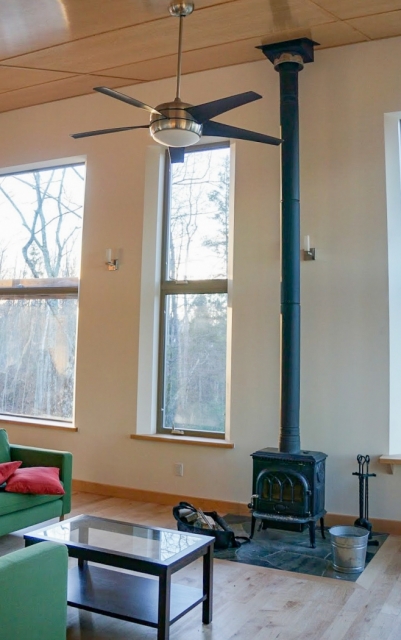
Heaters are generally rated for the BTU they can produce in an hour (BTU/h). To get an initial approximation of our heating needs, we take the heating load for the year, divide by 100 days to account for the heaviest part of the heating season, and divide by 24 hours in a day to account for a heater running full time. Once we did the math, we got 13,800 BTU/h.
This calculation would be assuming we heat the entire house to 70°F (20°C) with just the wall unit for the entire winter. In actuality, we will keep a lower set-point, and this unit will instead keep just a portion of the house at about 65° to 70°. That allows the rest of the house, heated by the hydronic system, to be cooler when we aren’t there. This calculation is just an estimate of the average heating load, so this amount of heat wouldn’t be able to keep up with heating the whole house on the coldest days of winter.
We selected the Empire DV215 heater, rated at 15,000 BTU/h, which sits in the central bedroom, radiating heat out to the rest of the lower level.
Wall heater was a success
By March 2016, with winter on the run, I knew the wall heater was an amazing success in terms of reliability and reducing the use of electricity with our heating. The heater was able to carry essentially all of the heating load for the house during the weekdays when we were often in the city. The heater was placed in the kids’ bedroom, and set to around 68°F. Upon our arrival after a few days away, the adjacent rooms were always 60°F or warmer, and the upstairs was always warmer than 50°F.
From a starting point like this it was quite easy to turn up the boiler, start a fire in the wood stove, and be down to shirtsleeves in no more than two hours.
One other new (more like forgotten and found again) fact is that our energy evaluation also included a calculation of peak heating loads for the home and boiler system, which actually matching quite closely to the calculation I did above. The HERS calculation of peak heating load for our house is 23,400 BTU/h, which including the caveats that I mention above. This is the amount of heat that would be needed to keep up on the coldest days of the year, not the typical winter day that I tried to estimate for.
This peak load calculation also showed our actual boiler specification, with a rated heat output of 136,000 BTU/h. This is nearly six times our maximum heating load and is majorly overkill, but I have heard time and again that heating and cooling contractors usually overbuild these systems, and our house does require a much smaller heating load than the standard home.
Weekly Newsletter
Get building science and energy efficiency advice, plus special offers, in your inbox.

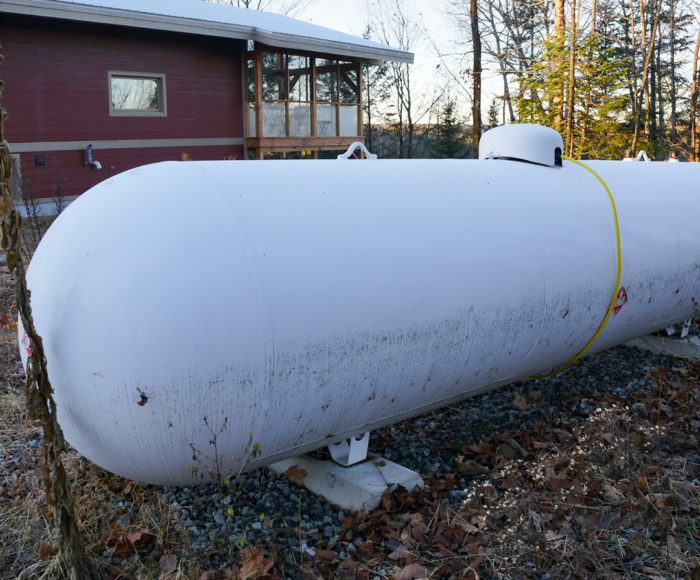




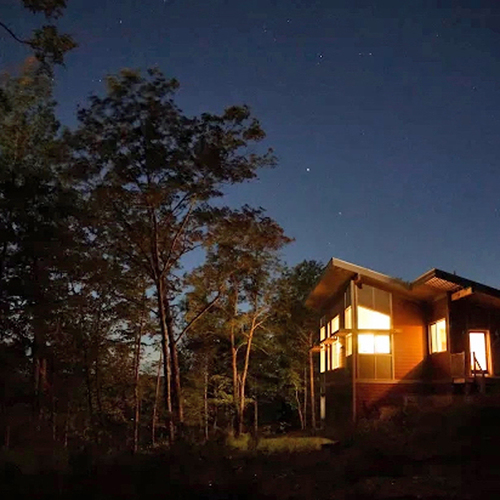
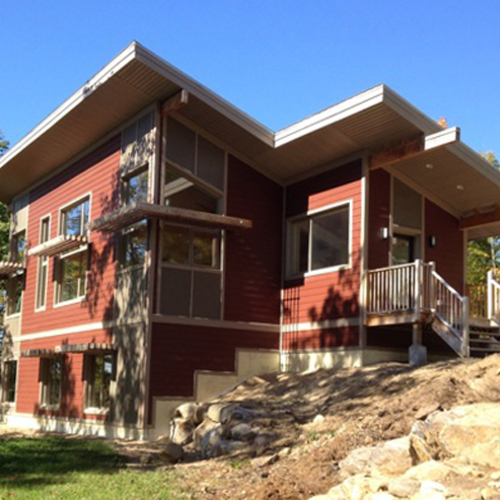

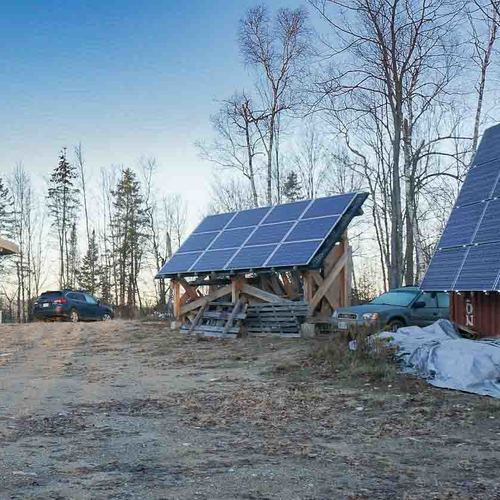






18 Comments
Off-grid heating systems
Craig,
Thanks for sharing your "lessons learned" story.
Your conclusion is on the money. I agree with what you wrote: "The big problem with our heating system was that it was relatively complex and brittle. We aren't there all the time to run the wood stove, meaning the boiler really needed to carry the load. The problem is the system requires a constant, and quite significant, supply of electricity at the time of year when it is most difficult to generate power from our photovoltaic array."
I can't resist reminding GBA readers that reading GBA articles can save readers thousands of dollars. If Craig had read our 2011 article, "How to Live Comfortably Off the Grid," before he designed his heating system, he might have noticed these sentences:
“'Whatever you do,' Holladay [advised], 'don't choose any heating equipment that will require electricity to operate.' He suggests one or more propane space heaters with through-the-wall venting and air intake. Empire makes several models that will run without electricity.”
The article continued, “'When it's cold and cloudy, a hydronic space heating system requires electricity to operate the circulators,' he writes. 'This really is a deal-killer — in the middle of winter, when you are cold, where is the electricity coming from? I have friends who built a new off-grid house with a hydronic heating system. They had to run their gasoline-powered generator all winter. The noise drove them nuts and the fuel cost nearly bankrupted them.' And, he adds, there's a serious chance for a freeze if the house is unoccupied for a weekend.”
Off grid lessons
All roads lead to vented propane, don't they? Off grid, especially for those who are not there all the time, basically must have vented propane heaters. They are extraordinarily reliable...however it is good to have a few spare parts on hands. The pilot light orifice and the thermo coupler post are prone to occasional blockage and or failure. To replace it is easy but one should rehearse a little. These heaters can go for years without failure but should they fail it is urgent that they be repaired and Mr. Gasfitter may not be available.
Aside from that, the fault of these things ( which I have lived with by the dozen for more than 25 years) is that they are noisy. At least all North American models are, but I encountered a Dutch made one that was silent. I use it for ten years and replaced it with a Williams...noisy, clink, clank, bink.
I would love for any readers to share European types which are quality and silent...there must be German or Swedish engineering with higher standards than American.
electrically efficient hydronic systems
I agree 100% that for a simple, reliable off-grid heating system, something that doesn't rely on electricity has a huge advantage. I also agree 100% that getting a hydronic system designed and installed well is difficult.
I also want to point out that it is possible to design a hydronic system that uses a lot less than 400 W. The photo shows four circulators and six zone valves. None of the circulators are the ECM motor type, a choice that can cut electricity use by a factor of at least 2, often 4 or more. There are similarly large ranges of electricity use in zone valves. Even the control systems can use significant electric energy over the course of a year if they are left on all the time, and the amount they use can be significantly different for different systems.
The boiler itself also consumes electricity, but its specs don't say how much. That's a bit of a scam. Somehow boiler manufacturers can get away with selling a boiler as being super-efficient without telling you how much electricity it uses. Green builders shouldn't let them get away with that.
off grid pumps
Yes, I forgot to talk about the radical efficiency of ECM pumps compared to the brute force lunacy that plumbers often install. Plumbers know almost nothing about off grid demands. We replaced all our pumps on a 10,000 sq ft off grid house with hydronic heat, the ECM are as little as 9 watts, like led lightbulbs compared to incandescent. As well a larger diameter tube in the slab helps immensely with resistance. See Amory Lovins replacing all his infloor radiant tubes with larger diameter. Of course for mere mortals it is too expensive to retrofit the infloor but at least for the next generation do the plumbing calculations on 1/2 inch vs 3/8 ID. But in the end, one often ends up just running the wood stove anyway. So just forget radiant and invest in good underslab insulation, a good wood stove and vented propane wall heaters.
Response to Ven Sonata
Ven,
That's the most important takeaway: "Just forget radiant and invest in good underslab insulation, a good wood stove, and vented propane wall heaters."
68F
I'm a little surprised you have the thermostat for the new heater set at 68F when no one is home. Many people don't have theirs that high when they are home. Seems like you could set that back quite a bit, still keep the house from freezing, and save a lot of propane.
Some responses
It may not exactly come out in the blog piece, but the biggest problem is that we did not have an off-grid specialist involved in the process of designing all of the mechanical systems. I was spending all sorts of time on other aspects of the design and build, and everyone involved underestimated the importance of choosing the right heating system, incorrectly assuming that this system would work out fine. So the system was largely designed by the installers, and they chose to use the components that they were used to. I know from speaking with one of their installers at a later date that they didn't even consider ECM pumps, and the price that they quoted me for swapping them in was outrageous. The problems with the heating system were certainly the toughest, and most expensive, of the lessons that I had to learn the hard way with this place. If I could go back and change anything, it would be to have done a better job of researching the heat and power systems before we began the build.
Daniel, about that 68 degree figure (it was often actually more like 65), there are three good reasons that I leave that set point so high, namely my wife, my 3 year old son, and my new daughter. During the winter we go out every weekend, and almost always arrive after dinner on Friday nights. The three of them go straight to bed, and my wife wants the the kids (and herself) to be warm in the kids' room when we arrive. Aside from that, setting it this high also means that we can have the slab set to 45 degrees or so, and then the boiler only needs to kick in on the coldest of days to keep things well above freezing.
reponse to Craig
Craig, I'd look into a 7 day programmable thermostat. You can keep it real low M-Th and much of Friday and set it to warm up shortly before you arrive. I believe there are also options that can be controlled with a smartphone remotely. I'd bet the new thermostat would pay for itself in a fairly short time.
Electric efficiency shouldn't be just for off grid
I am saddened by the idea that you should not have expected your hydronic system designer to consider electric consumption because you didn't get an off grid specialist. I think that all hydronic systems should be designed for low electrical consumption. And doing so doesn't need to be very expensive. It turns out that ECM pump motors not only improve efficiency--they also allow better control which often means you can do a good design with fewer pumps. I don't know enough about this system to be able to say how many it really needed, but likely just one or two ECMs could have done it, and that would have been less expensive, not more.
I am not criticizing Craig's choices, or the story which advocates what I think is the right choice for this situation. I am just lamenting the poor quality of hydronic design in North America. I hope my comments will encourage some people to insist on low electric consumption hydronic systems even on grid, and will encourage others to skip that struggle and install minisplits and other systems that are pre-engineered.
Response to Charlie Sullivan
Charlie,
I couldn't agree more.
Many Passivhaus buildings have a design heat load of 2,000 watts. The idea that a hydronic system needs 400 watts of electricity -- before anyone even begins to account for the fossil fuel that the boiler is burning -- is outrageous. Of course, those hot circulator motors are helping to heat the house -- but electricity is expensive, and that's a silly way to heat your house.
Main heat or back-up?
You have a 5KW solar system for a super-insulated small house, and a battery system. Could this not be a zero net energy home, using the PV and super-efficient minisplit heat pumps to heat your home as well as take care of the other electricity loads?
For emergency back-up a propane wall heater or generator could be used.
Response to Christopher Vlcek
Christopher,
The house might be net-zero if it were grid-connected, but it couldn't possibly be net-zero if it's off-grid. I know, because my house is off-grid -- and I live in northern Vermont, not far from Craig Anderson's off-grid house in Quebec.
In our corner of the planet, we can have three weeks in a row without any sun at all (usually in November and December). At best, batteries can help a house limp along for three (or at most four) days. Net zero is impossible -- unless you have a big wind turbine in a very windy location or a micro-hydro system and a year-round stream.
And there is no way that an off-grid house in Quebec can use electricity as a space heating fuel. Since there is virtually no sunshine in November and December, where does the electricity come from? So forget minisplits.
Response to Martin Holladay
Martin,
while in normal circumstances I would agree with you (I live in Quebec as well), keeping the radiant heating but with a large (in the thousands of gallons range) hot water reservoir, heated in the summer would be able to heat the house throughout those "sunless" weeks.
Of course this is more extreme but may be cheaper than continuous propane use.
See Thorsten Chlupp's house which you are familiar with.
I hope to have an off-grid in Quebec in a few years and I expect that other than for cooking, I wouldn't need to use any propane at all.
Thanks, Jon
Response to Jonathan Lussier
Jonathan,
I've reported on many homes that have included equipment designed to store heat on a seasonal basis (in other words, to store heat gathered in July and August for use in November, December, and January).
Far more of these homes have technical problems (or simply don't work) than otherwise. Only one or two acutally (kind of, sort of) work.
None of these homes are cost-effective. (In other other words, the cost of the storage equipment will never be recouped in future energy savings.)
wood stove
Thanks for sharing your lessons learned, it is always helpful for clients who come to us with goals to use technologies like this to have articles like this to get more info.
in that picture it doesn't look like the wood stove has an outside air intake, but it may be behind. How air tight is the house? Do you have issues with wood smoke backdrafting into the living space?
Responses to Martin and Christopher
I think that Martin does a very good job of outlining the basic problem of a distinct lack of sunlight through the late fall and early winter. I do have a couple of thoughts on getting to net-zero though, or at least getting closer to it. We do often have excess electricity production from our panels, and there are ways that we could (and will) use some of it. First, this fall I am installing a bit of electrical work that will allow a relay to selectively supply power to ‘dump’ loads at any time that the batteries are full and there is still significant power output coming from the panels. This is afforded by a feature on our charge controller that can open and shut a switch based on the voltage of the battery pack. Once installed, we can then use up some of that excess power for electrical space heating, and in the future that power could be used for electrical domestic water heating, charging an electric car, running a mini split, etc. We will still be needing the propane for a while, but will be reducing some, and offsetting other, parts of that propane usage.
As for the seasonal heat storage via big water tanks, the idea does appeal to me (and many others who have looked at these issues), but what little research I have done supports Martin’s take that these end up being unwieldy and expensive systems. If someone ever developed a version that established a strong track record across many installations, then I would certainly consider it.
Response to Leigha
Leigha, we did a blower door test when the house was about half done, but before the drywall and interior air sealing, so it is probably a bit tighter now. At the test, the house was at 1.47 ACH. And no, we do not have an outside air intake for the stove. We (my builder, architect, and I) went back and forth on it before deciding not to punch additional holes in the walls. The stove is a relatively small one, quite efficient, and with an interior stove pipe, all of which should help to avoid backdrafting or air pressure imbalances. I figured that in the worst case scenario I could simply crack the window open immediately adjacent to the stove, or install an air intake at a later date. And I am happy to report that there has never been a hint of any problems along these lines, the stove has worked perfectly at all times since installation.
Solar thermal omitted early in the design process
Craig and I discussed the installation of thermal solar domestic hot water early on in the design process. Based on my research and previous course work, solar thermal was too expensive (no payback) and too complex (maintenance and leaks). I had done some research on solar hot water storage as well, but it has the same issues and the large tanks occupy a significant volume of the house. In the end, the maintenance and leak issues popped up on the hydronic system.
On two grid tied homes, we installed one condensing gas boiler to provide domestic hot water and space heating. The space heating was provided by a hot water loop inside an air handler. So far those systems have performed well. It's also a good option for clients who desire central A/C.
Log in or create an account to post a comment.
Sign up Log in